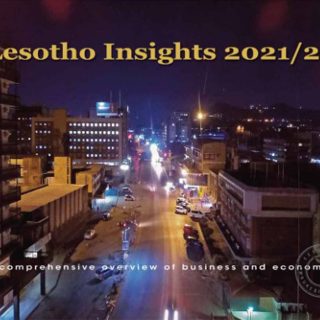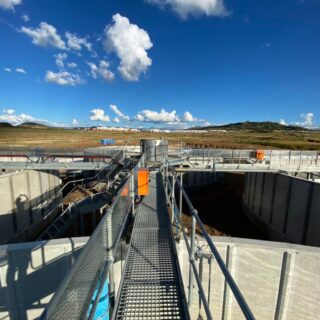Media and Telecommunications

Lesotho’s Media and Telecommunications sectors have not been spared the negative effects brought about the Covid-19 pandemic. With many of the smaller operators in the main-stream media being forced to downsize or work with very thin budgets, others have even had to close shop. As for the telecommunications sector, there has been a slight slow-down during the Covid-induced economic lock-downs, especially with works planned for infrastructural development.
Like its peers in the category of least developed countries, Lesotho enjoys a vibrant and growing media and telecommunications industry. There are vast opportunities for investment and growth in this sector, as there are also challenges in relation to the existing gaps in legislation, infrastructure and probably technological inequalities in relation to other countries. The size of the country’s economy is only relative to its advancement in technology and media pluralism.
In the sub-region Lesotho media history dates as far back as 1863 with the first newspaper, Leselinyana la Lesotho (the light of Lesotho) or simply Leselinyana, published in 1863, some thirty years after the arrival of the first missionaries in 1833. The country adopted the world of media and the literary sectors as early as the establishment of the evangelical missions and movement in the region, Leselinyana has been in circulation until the mid-2000, when it eventually shut down.
The country however still has many publications, mostly weekly tabloids with various players such as the Roman Catholic Church owned Moeletsi oa Basotho (Basotho Advisor), the state newspapers Lesotho Today and Lentsoe la Basotho (The Voice of Basotho) and various private players like Public Eye, Lesotho Times, The Post. There are other publications that come and go as well as numerous periodicals and magazines.
In recent times, print media developments in Lesotho have seen the migration from print-only to online versions of all major weeklies of the country. To date, Lesotho does not have a daily newspaper, and most papers in circulation are published on Tuesdays, Thursdays, Fridays and Sundays. On the alternate days there is a deficit of current news. The gap in current news has been filled by an emerging trend of citizen journalism, especially on facebook with platforms such as Hoatiti News, Liotloana and others. Whereas citizen journalism is a new trend, with faceless writers and generally lacks the credibility of mainstream reporting, it has been instrumental in breaking stories that provides leads for Lesotho tabloids.
The Broadcasting Sector
There are 27 licensed radio and three television stations in Lesotho. Radio Lesotho and Ultimate FM are radio stations classified as public broadcasting, where the ownership is with government through the Ministry of Communications, Science and Technology. Other Radio stations are in private ownership or community radio stations. Most of these private radio stations also stream live on internet. Sky Alpha, one of the latest entrant in the market is the only radio station that only broadcasts online, a new phenomenon in Lesotho.
Radio Lesotho, being a public broadcaster and the biggest by reach was established on 7th September 1964, it started with a 660 watts transmitter, as the department of broadcasting directly under the control of the resident commissioner. Radio Lesotho’s monopoly of the airwaves only came to a stop in 1998 when the country started to open up private radio stations. The first was Moafrka FM, and many others then followed until now when we are on the count of 27, which is also poised to grow as more and more community radio stations are being established. It is worth noting that almost all private radio stations in Lesotho do not have transmitters, but and rent their transmission infrastructure from Radio Lesotho. This has for a long time compromised media independence and pluralism, where radio stations that produce content that is critical of government face the risk of being switched off air, usually under dubious circumstances.
The Lesotho Television was set up in 1988 by the government of Lesotho. The television started its broadcast with a live transmission of thirty minutes from MNET transmitters. Although Lesotho Television broadcasts 24/7, the station is still unable to broadcast a lot of local content, which is only limited to about four hours a day dominated by news, current affairs, sports and a limited number of magazine programmes, The station broadcasts locally and internationally via DSTV on Channel 191.
Telephony, Internet and Mobile Money
In 2000, government-run Lesotho Telecommunication Company (LTC) which was providing telephones and fax services was privatized, opening doors for private investment in the sector. The project included a cellular telephone service, with the government relinquishing ownership in 2001.
The internet has made slow inroads reflecting low incomes and a small potential market. Before localizing the service, Lesotho’s Office Equipment’s Internet connectivity was through service providers in South Africa.
There are two mobile operators in Lesotho, being Vodacom Lesotho and Econet Telecom Lesotho and Vodacom Lesotho. It is the leading provider in Lesotho, with almost seventy percent of all national subscribers. The network has fair coverage and speed with 3G networks and 4G/LTE introduced in 2014 in major towns. The network has recently introduced 5G, being one of the pioneer projects in Africa, though still under the testing phase.
Another player is Econet Telecom Lesotho which came into being following a merger between Telecom Lesotho and Econet Ezi-Cel Lesotho in 2008, the merger of the two companies allowed ETL to provide both fixed and mobile services under one license. ETL has 2G on EDGE on 900 MHz, 3G up to HDSPA, on 2100 MHz. Econet currently provides high speed fibre connectivity on internet and plans are afoot to rollout this connectivity throughout the country.
There is effective competition in the mobile sector between South Africa-based Vodacom and ETL with low prices. For both operators 2G is on 900 MHz, 3G on 2100 MHz and 4G/LTE, started on Vodacom on 800 MHz. MTN South Africa roams on Econet in Lesotho and Vodacom Lesotho roams on Vodacom SA.
With the advent of mobile money, which is growing rapidly in Lesotho, Econet Telecom Lesotho and Vodacom Lesotho have encroached the turf of the financial services sector with their offering on Ecocach and M-pesa respectively.. Whereas mobile money addresses the challenges for those sections of the society that are underbanked or unbanked, a lot still remains to be done on the regulatory side, where the Central Bank of Lesotho has to provide adequate oversight to ensure that mobile money transactions are safe, secure and in line with international best practices on Know Your Customer (KYC) parameters.
Regulation
The Lesotho media and telecommunication sector is guided by laws spread across the numerous acts of the country. The sector is regulated by the Lesotho Communications Authority (LCA) which also discharges its function to monitor this critical sector in the development of the country.
It should be noted that the LCA, in discharging its functions under the Communications Act No. 4 of 2012 and the subsidiary legislation may issue enforcement orders, conditions of service to service providers, guidelines and prescribe procedures for licensing and dispute resolution. The Authority may also adapt international best practices from international treaties and activities of regional organisations to which Lesotho is a party in the formulation of legislation.
With more private players in the broadcast sector being registered and the use of social media gaining momentum in the public space, the LCA as the lead has recently engaged with multi-stakeholders on the way forward in finding the best way to bring control as well as protection of citizens and state institutions.
Some of the most important changes in the legal framework as well as guiding tools for the sector to operate smoothly, professionally and by abiding by the set laws of the state, will be expected to come out of the ongoing national reforms processes – which the media is part of.
Specifically on the telecommunication sector, the LCA is also laying the ground to enforce the rules of fair play and healthy competition while recently having reportedly looked into expansion possibilities in the sector or even introduction of other service providers.
Lesotho has also benefited by gaining connectivity to several submarine fibre optic cables which land on Africa East and West coasts. These fibre optic connections have quadrupled international bandwidths since 2012 and largely contributed to lower end-user prices to make internet connectivity in Lesotho relatively on par with other countries in the region.
The LCA is currently examining the potential introduction of a SIM Card registration in the country in a bid to curb crimes committed using mobile phones as well as having recorded data on mobile services usage and coverage. Presently service providers and the regulator are encouraging users to register their SIM Cards while the legal necessities for this exercise to become law are being finalised. For the time being, Lesotho remains one of only a handful of African countries without any form of a binding SIM card registration legislation in place.
In the 2021-22 fiscal policy, the Government of Lesotho through the Ministry of Communications, Science and Technology has committed to the implementation of E-Government Infrastructure project which will increase broadband coverage in rural and unserved areas through construction of 48 Mobile sites. This construction will be undertaken over the medium-term. The project will further construct 96 km fiber network from Roma to Thaba-Tseka in order to improve the quality of E-services.
The Government digital services will also be strengthened through the development of Government Electronic Payment Gateway and the Rural Community Payment Network during the current financial. Under this project, 40 common digital services centers will be established.
The Ministry will also review and develop a legal regulatory, policy and institutional frameworks to lay the ground for the private sector-led economic growth and job creation. The ICT policy Review and Cyber Security Bill are also at an advanced stage with most of the reforms that will be proposed expected to be in place before the general elections scheduled in the second half of 2022.







